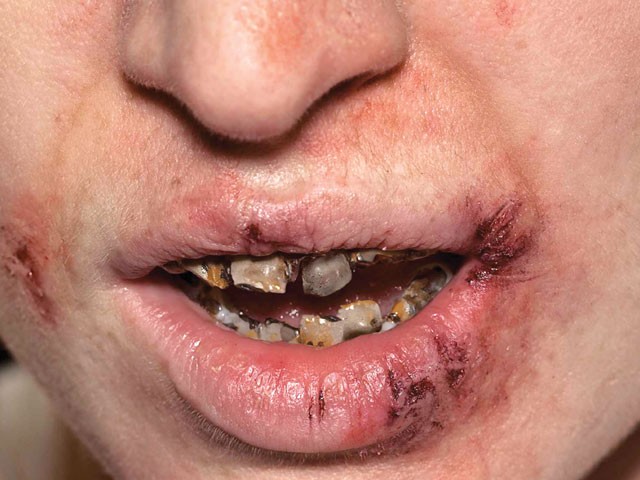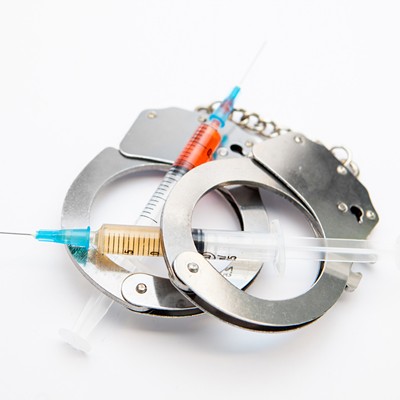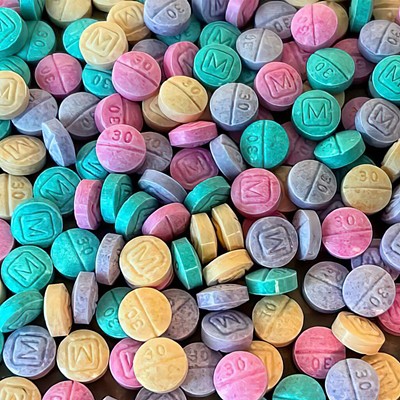A decade ago, the ubiquity of the do-it-yourself methamphetamine labs made for a lot of lazy go-to punch lines about Spokane and Kootenai County. Back then, Spokane and North Idaho were both repeatedly referred to as “meth capitals.”
But today, those labs have, for the most part, disappeared. “We’ve seen the lab just fall off the table locally,” Major Ben Wolfinger of the Kootenai County Sheriff’s Office says. “Local dealers, they’re not cooking from their own meth. They’re bringing it from outside the area.”
The kids are using less meth as well. Idaho trumpets the results of the latest National Youth Risk Behavior survey. The percent of Idaho teenagers saying they’ve used meth fell from 6.4 percent in 2007 to 3.1 percent in 2009.
Idaho’s decrease was dramatic but in line with the general trend.
Nationally the percentage of teens who say they’ve used meth declined from 9.8 percent in 2001 all the way down to 4.1 percent in 2009.
Between 2006 and 2008, the total number of current meth users decreased by over half.
Great news, of course. But what’s behind it? Who — or what — do we give the credit to?
IN YOUR FACE
Wolfinger thanks mandatory sentencing. Put away a meth producer for an automatic five years or more, and it’s a long time before he’s cooking again. Wolfinger also credits education. The “Meth is My Neighbor” campaign taught citizens that you should probably call the cops on that next-door house with the weird smell and the sketchy visitors at odd hours.
Idaho Gov. C.L. “Butch” Otter drops the name of the Idaho Meth Project. You’ve probably seen their anti-meth billboards. They’re the ones with the gritty grime-andrust aesthetic and slogans like, “You’ll never worry about lipstick on your teeth again,” with close-ups of mouth sores and stained, crooked teeth.
The grisly shock-and-awe ad campaign started with the Montana Meth Project in 2005. “Before meth I had a daughter,” one billboard read in Montana. “Now I have a prostitute.”
In some cases, the ads (“My girlfriend will do anything for me ... so I made her sell her body”) were provocative enough to make parents angry.
“I have two children who can read and the other is learning and now I have to explain to my young, innocent children what selling your body means,” Post Falls parent Tim Gardner told the Coeur d’Alene Press. “I am tired of these disturbing images being forced upon my family and I.”
He asked the city of Post Falls to remove the billboards and said he talked to 25 others who’d also been upset by the campaign.
“I certainly understand their perspective. Unfortunately, this is the reality of the drugs,” says Megan Wonk, executive director of the Idaho Meth Project. “We’ve talked face to face with teenagers. They have really strong reactions to [the ads]: ‘Those ads scare me. I never want to look like that.’” But a study by David Erceg-Hunc, a researcher from Western Australia, casts skepticism on the effectiveness of those sorts of ads. In Montana, he writes, some of the effects of the ads were negative. After six months of exposure to the ads, teens were three times more likely to claim using meth was not risky behavior, and four times more likely to “strongly approve” of regular meth use.
“The idea behind the ad campaign is that teenagers take meth because they believe it is socially acceptable and not risky — and the ads are meant to alter these perceptions,” Erceg-Hunc writes. That theory’s flawed, he says, because even before the Montana campaign, 98 percent of teens strongly disapproved of meth use.
Erceg-Hunc also cites the fact the Government Accountability Office found the $1.5 billion National Drug Media advertising campaign ineffective.
But in Idaho, Wonk says, the evidence is clear. A few years after the ad campaign, surveys showed that Idaho teens’ knowledge of the specific dangers of meth had dramatically increased.
THE DRUG STORE
Mike Sanders, special agent with the Drug Enforcement Administration, says you should thank the Combat Methamphetamine Act of 2005 for meth labs disappearing. Pseudoephedrine — an ingredient found in cough syrup — is crucial for making meth.
The law not only restricted the amount of pseudoephedrine products any one person could purchase, it required them to show identification to drug store clerks. The big drugstores — Walgreens and Walmart, for instance — even began to link their computers, detecting any one person buying lots of cough syrup at multiple stores.
With those changes, making meth in the United States would have required a whole swarm of underlings to buy pseudoephedrine from different stores — not a resource the average trailer-park chemist has.
“These guys weren’t making big bucks,” Sanders says. “It was about making enough methamphetamine to support their habit. They’d sell just enough to make another batch.”
By the time the law went into effect in late 2006, the effect was swift: From 2005 to 2007, the average street price per gram of meth increased 37 percent, and the purity fell 24 percent.
But the market adapts. “We as [the] DEA started seeing a lot of methamphetamine come out of the super labs in Mexico,” Sanders says. Outlaw motorcycle gangs, he says, saw an opportunity to sell Mexican meth, in bulk, to America. Quickly, the Mexican meth manufacturers figured they could cut out the middleman and sell to Americans directly.
The purity of the meth went back up and the price came back down. Today, meth supplies are at a five-year high.
There’s more bad news. Sanders says that while meth has fallen among teens, prescription drug abuse and the use of heroin is on the rise. That’s why campaigns aimed at reducing drug demand are so crucial, he says.
“If we got through to just two kids out of 200, those are two kids less that are using drugs,” Sanders says.


























